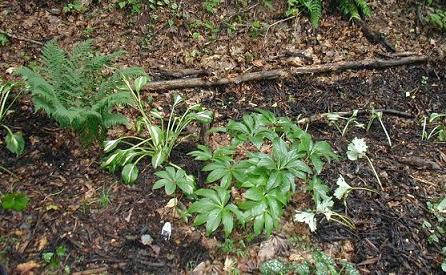
Last Friday I planted one tray of Hosta 'Undulata' divisions. That meant I had a second tray with another baker's dozen that needed a permanent home in the garden. I took them further down the path towards the big bridge. A vigorous Lenten rose, Helleborus ×orientalis, and marginal shield fern Dryopteris marginalis, were already well established. I tucked hosta between then, behind them, around them, but needed something more. One advantage of self-multiplying plants is that volunteers provide self-service shopping. Some single bloodroot, Sanguinaria canadensis, had begun colonizing. If not moved away, they'd be run over the next time the Quad came down that path. Their organge rhizomes had numerous short spurs, each tipped with a fat bud for next spring's growing season. Some gentle persuasion gave me nine or ten divisions. Most of the foliage came off. Not a problem, the leaves were beginning to look tired, a result of end of summer's approach and the dry weather we've been having. Doll's eyes, Actaea pachypoda (or maybe it is Actaea alba, I think the taxonomists have been after it) had self-sown along the path towards the compost heap. They're still quite small, but I dug half a dozen and planted them behind the hosta. It will be nice next fall when the doll's eyes white berries and white variegated hosta play off against each other. There are some white woods aster, Aster divaricatus all around the woods here at BelleWood Gardens. Perhaps I'll try a little fertilizer next year, and see if I can bulk up the ones growing in this area. They're just coming into flower now, and a froth of little white daisies would blend in nicely for an autumn vignette. Which reminded me that there's a small liriope with white flowers rambing out into the path just down from the steps that lead from the driveway into the woods. The Quad isn't driven there, but why not give the liriope a more secure home than leaving them underfoot.
The hellebore and fern look regal, while the hosta and bloodroot can best be described as rather bedraggled. And the liriope and doll's eyes might as well be invisible. No matter, in my mind's eye I see what the results will be when the circle of seasons bring my vignette to maturity. Gardening is the never-ending story. It's not just what is, but also what will come, down the garden's path.

You should see me wheeling three 5 gallon buckets, with lids on, down my driveway and ladling precious water out to the plants. It's not that our well is running dry, just that I cannot stretch hoses that far into the woods. Maybe rain on Sunday, probably not. Oh well. Even poison ivy is drooping. With the lids on, I got the bright idea that perhaps I could do a double-decker load. So I snapped the three lids on tight for the bottom trio of buckets, filled two more and set them on top (lids not a secure, a little large) and a 2-1/2 gallon watering can, also filled atop the third bucket.
As I started down the driveway I found that leaning back against the cart's urge to freewheel was helpful. Amazingly, I could control the cart load with close to 200 pounds of water. (Remember, a pint's a pound the world around.) When we arrived at the steps into the woods, I set something in front of the cart's rear wheels as a chock. Off-loaded the watering can, reached for a bucket - and the cart decided to hurtle down the driveway on its own, gaining speed as it travelled. Hurling myself after it like a baseball catcher after a fly ball, I managed to shove it to the side where it ran off the asphalt onto the soft soil and tipped over.
Picking myself up off the pavement and gingerly bending my knee (skinned a little bit, not badly) I went after the cart and buckets. Amazingly, the tight lids retained most of the water. The two buckets with loose lids did a nice job of watering the hostas and ferns planted to the side of the driveway. The cart, I decided, may be strong enough to take the weight of five water-filled buckets, but I lack the necessary element of control. Fewer buckets, more trips, it will all balance out in the end.
Water moved to the planting site I then moved buckets of leaf mold / compost, and more buckets of year-old wood chips. Mattock, 3-prong hand digger, and two trays of Hosta 'Undulata' divisions (described in the June: Fourth Week Diary entry as A Haul of Hosta). And finally! I am ready to begin planting. (The joy of a large garden - or should I say the workout provided by a large garden.)
One of the difficulties of gardening with plants that settle in and make themselves at home is that boundaries become softened, blurred with self-sown seedlings and offsets. The situation is exacerbated when Paul needs to drive through on the Quad, pulling a cart filled with firewood. After some discussion, I've been provided with a 5-foot long piece of 2" X 4" board. If it fits between the planted areas, so will the Quad and cart. Amazingly, many stretches of once-wide-enough paths are currently appreciably narrower. So one thing I've decided to do is create better definition: small walls of stone to level the path-side slope, as well mark the plants spreading ways for me to curb them. Lengths of slash - coarse barnches too small for firewood, too large to compost, will also serve but tend to rot away over time.
I could have planted the hosta in a continuous line as a boundary to the path. However that would have given an organized, more formal look. This part of the garden is intended to have a somewhat informal, more naturalistic look. So hostas were group three here, another three there, and one by one, the baker's dozen mixed with Nippon lily,Rohdea japonica with a little white edge to its evergreen strap-like leaves, some Solomon's seal, Polygonatum biflorum, Asarum shuttleworthii 'Callaway', a pretty little ginger with silver veined leaves, pulmonaria, tiarella, and the usual violets that strew themselves around my garden.
The hosta don't look like much right now. After all, I had split them down to single or double crown divisions. But I gave them a great start, with year-old leaf mold dug into their planting holes, a thin layer of the same material as mulch, which was then topped with the aged wood chips. Plus, they have weeks and weeks to settle in before cold weather arrives. Things will look much better next spring, when they've settled in to their new home. But for now . . . for now how they look is more in my mind's eye.
Moderate temperatures and clear sunny skies set the stage as several members of the Alexandria Township Garden Club gathered in a nearby restaurant parking lot to caravan to the garden of Dr. Gerald Barad, M.D. Known world-wide for his expertise in the cultivation of cacti and succulents, his interests go much wider into the world of plants. After a gracious welcome we stepped through the door to a sweeping view of distant landscape. At the foot of the steps a gently sloping lawn lead to borders of annuals and tender perennials. Dr. Barad began his well-conducted tour with an explanation of how they came to buy this property and build their home. As we gathered attentitively around him, our first stop was a beautiful little tapestry garden of succulents. The diversity of foliage shapes and muted colors are very attractive.
Hardy to frost but not to freezing (O.K. to about 28° Fahrenheit) each fall cuttings are made of the various different succulents, to be wintered over in the large greenhouse. In April, when the new spring season arrives, they are planted out. But by now, the careful design has become somewhat blurred as the plants burgeon in the hot weather we've had this summer.
The annual borders wrapping two sides of the lawn are a gay fabric of color: zinnias predomiate but many other flowers such as cleome make their contribution. At the corner is Dr. Barad's "banana patch" with Japanese fiber banana, Musa basjoo, yellow-flowered banana, Musellaa lasiocarpa, and dwarf Cavendish banana, Musa acuminata 'Dwarf Cavendish'. A nearby patch of strap-like leaves indicates where Peruvian daffodils, Hymenocallis narcissiflora had earlier been in flower. The bulbs are dug and stored under cover for the winter, while the bananas are also dug, potted, and moved into the greenhouse. (It is a very large greenhouse, and it is barely large enough for all that it must hold, especially in winter.)
The border parallel to the house is backed by a number of large specimens of angel trumpet, Brugmansia cultivars. Their lush growth towers 8- to 10-feet high and even wider (though difficult to judge as by now their shoots are touching.) Though the wretched Japanese beetles have munched on some tender leaf tips the plants are undeterred in their vigorous growth, and buds are forming for their farwell-to-summer display of dangling trumpets in apricot, peach, and white, mostly single and some double flowered ones. When autumn is just on the way, Dr. Barad takes a chain-saw to them, and chops the plants down to about 4 1/2 feet high. They are dug, and potted into large plastic tubs, then hauled into the head house / work area for the greenhouse, where they'll spend the winter.
The flower bed is anchored on the left by a patch of castor bean, Ricinus communis, even taller than the angel trumpet with huge palmate leaves. They are the offspring of a self-seeding colony that established itself over the years. A new addition this year is the cultivar 'Zanzibarensis Enormis' with positively gigantic, deep green leaves. There are more flower beds, raised with landscape timbers and backing up to the swimming pool terrace. Wave petunias cascade over the edge. There's been a problem with them - the caterpillars of petunia bud moth have been dining on the tightly furled buds. A localized treatment with Sevin has halted their depredations, and the petunias are beginning to again make a good display. The main part of the bed is filled with intense cerise pink Celosia argentea Cristata Group, with broad, flattened flowers. Pale pink cleome have self-sown in here, and form an attractive backdrop. The cleome have even sown themselves into the spaces between the concrete slabs that form the pool terrace, where they are somewhat stunted but are flowering none-the-less. Now that's endurance!
Around the back side of the pool is a garden of hardy cactus and ice plants, Delosperma species. The sloping bed, the stones that form several terraces, good drainage, gravel mulch and its south-facing aspect all combine to better allow winter survival of the cactus. In some years, Dr. Barad sets up a temporary plastic roofing cover over the area - it is not winter cold that harms the plants, it is winter wet.
Nearby is a large vegetable garden. When they first moved here and had four children at home, the garden fed a family of six. The children are now grown and have long since moved away, but the garden is still the same size. Tomatoes, lots of tomato plants. Blocks of corn. Lutz Winter Keeper beets that can reach 8 pounds, and the more familiar smaller beets. Cantelopes - and Dr. Barad had just picked a dozen, each weighing between 10 and 12 pounds. Basil and beans and more. The vegetable garden is screened by a high wire fence to keep out deer and most other critters. One side is covered with passion flower vine, buds still furled for our morning visit, that will open their extravagant frilly purple flowers in the afternoon.
The tour continues: koi pond with cannas, elephant ears and an exquisite pink flowered lotus in bloom; a specially prepared bed for insectivorous pitcher plants, dug two feet deep and filled with peat moss and sand, with a buried overflow pipe from the koi pond; a shade garden with many rhododendrons, now colorful with caladiums and impatiens.
We loop around and come to the greenhouse. The side vent windows are open all along the length of it, and a huge extractor fan roars at the end wall, so it is quite comfortable inside. This is the heart and center of Dr. Barad's world of plants.
An hour in the garden, an hour in the greenhouse - the time goes by all too quickly. Our tour concluded, we bid our farewells to this master plantsman and his wonderful garden, so graciously shared with our group.
I have this problem when I'm driving down the road. It's not that I'm absent-minded, just easily distracted. Here a plant, there a plant . . . Sometimes there's a tree or shrub out of season and I make a mental note to be sure and return when it is (choose one or more) in bloom, in fruit, turning to its autumn colors. Often, though, it is a surprise, a magical appearance of some plant in a roadside garden I've been blithely passing by again and again. That's what happened yesterday, and readily explains why Lycoris squamigera has the common names of magic lily and surprise lily.
In the spring the bulbs send up their leaves, which look rather like those of daffodils. But there aren't any flowers. The leaves yellow and wither away and life goes on. Sometime in mid- August there's a thunderstorm. Or the temperature drops. Whatever the cause. Something happens and in just a few days there are flowers. Nor are these dainty little ground-hugging miniatures. Lovely pink flowers delicately brushed with electric blue at the tips of the petals are atop 2- to 3-feet tall stems.
Today I stopped and rang the bell. The two guardian dogs announced to all and sundry that there was a stranger at the door. When a man came to see what all the fuss was about, I asked if I could take pictures. That was fine. Then I asked if he'd planted the flowers, how long had they been there, and . . . That was more than he could answer. Maybe I'd better talk to his wife. She told me the surprise lilies had been there since before they moved in 16 years ago. We spoke to her next door neighbor, who, it turned out, had given the bulbs to the previous owner sometime well before Ann and her family had moved in.
You just have to love bulbs. They're plants as can care for themselves. Most often we think of them as a springtime event, flowers offering a renewal after winter's cold and snow. Some bulbs, however, can have a different agenda. They sleep away underground until the time is right and up they come. Surprise lilies respond not to a chilly dormancy and springtime thaw, but instead provide a refreshing interlude to late summer's downward slide to autumn. Native to Japan, this species habit of sending up its foliage in spring makes it more reliable in New Jersey than those lycoris species with leaves emerging in autumn.
Next spring, Ann said, she'd be happy to share some surprise lily bulbs with me. If I remember. I'm sure I will. Wouldn't you? Especially for something as lovely as the resurrection, aka magic, aka surprise lilies that spring into bloom on a gray August day.
It's not that I am neat and tidy to begin with. If we were not supposed to pile things up there wouldn't be any flat surfaces. The situation is exacerbated by my furry friend Mist, who delights in keeping me company when I am typing away at the computer's keyboard. Sometimes she reposes on the work surface that's at right angles to the computer, as you see here.
It's difficult to wiggle papers out from under her chubby body, but not as awkward as when she chooses to lay on the other table, just beyond the keyboard and occasionally resting her chin on it to see what I'm up to. Unlike her brother Fog (seen relaxing in the 20 July Diary entry), she is an indoor-only cat. More timid, she comes up to the door to come in but then takes fright when it is opened and darts away to hide under the deck. Eventually she meows piteously and I let her in, but by then it is 2:00 a.m. I may have stayed up for our children when they were teenagers, but I'm not eager to do it for a cat! So indoors only she stays, purring happily as she keeps me company as I write.
Many years ago when I was a child and living with my family in the Midwood section of Brooklyn, New York, things were different. Children went out to play in the neighborhood of large Victorian homes on tree-lined streets. The major issue was when were you old enough to cross a street on your own. Once I'd reached that age of maturity, I began to explore. Around the back side of the block we lived on and across the next street I discovered a fascinating house. The strange yowling that caught my attention belonged to a Siamese cat, harnessed and leashed to the back porch. Siamese were very exotic back then. Fascinated (fool-hardy, my mother would have said) I walked into the yard and made friends with the cat. As I was sitting there petting it, entranced by its dark chocolate markings on a slender cream colored body, even more by its electric blue eyes and hoarse, demanding cries, an old lady came out.
In hindsight, she probably was not that old, but keep in mind that at the time I was perhaps 10 years old, maybe even less. She told me about the cat, then invited me inside to meet her parrots. Parrots! This was beyond dreams. We went through the kitchen and across a dining room to a small sunroom with windows on three sides. Some sort of vine, probably a philodendron, had grown so entwined with the slats that the blinds could neither be raised or tilted. There was a realistic wooden carving of a monkey hanging from the doorframe. Her husband had offered to get her a monkey, the woman explained, but she had not wanted one. So he gave her the carving instead. Off to the left there was a cage with a beautiful Amazon green parrot named Rita. She was timid, I was told, and it was probably best if I only looked at her from a little distance and did not upset her by coming too close to her cage.
Directly across from the doorway was another large cage, with an African gray parrot named Paul. He had vivid red tail feathers, and a sharp, knowing look to his bright black eyes set in pebbly looking white skin. After the lady introduced us, she told me I could scratch his head. I was a little afraid of his powerful black beak (perhaps not so foolish as my mother thought.) Clever bird, Paul hooked the tip of his beak around one of the wires of his cage and mumbled, "Pretty Paul. Nice Paul. Come scratch Paul's head." Magic. A bird that talked. What's more, not only did it talk, it made sense. After that, whenever I would visit I would gently ruffle the short feathers on his head.
Every now and then I would wander around the block and across the street to see if the cat was out or the lady was home so I could visit the parrots. One day she told me that her night-blooming cereus would flower, and perhaps I might like to come over that night to see it. Well, this was another story. Mysterious plants that flowered after dark! There was a problem though, two actually. This would be after my bedtime, and - while children had free run of the neighborhood in daylight, we were expected to be home when the streetlights came on. These seemed like insurmountable problems. I explained to my mother, probably somewhat incoherently, about this old lady with parrots and a funny-looking cat who had weird flowers that opened at night and could I please! go see it happen.
Amazingly enough my mother said it was fine. Not only could I stay up late, she would take me there, we'd watch the flowers open, and then she'd walk me home. And we did.
These memories have stayed with me for decades. I'm probably the same age as that "old" lady, if not older. I don't have parrots. But I do have a night blooming cereus. It's been flowering the last few days: two flower, then four more, and last night another fresh bloom. And there are three more buds for flowers yet to open. We live in a rural neighborhood. The houses are far apart, and there are no sidewalks. These days children cannot go out to play unsupervised. But the night blooming cereus follows the sequence of its days, and flowers whether someone sees it. Or not.
"That must be it." I said, as we drove past a driveway anchored by a large black leaved elephant ear. Ellen and I, accompanied by her little daughter Danielle and cousin Liina who is visiting from Estonia, were off on (what else) a garden visit. Undeterred by the brutally hot and humid weather, we'd driven to Willingboro, New Jersey, to tour Steve's garden. Ellen had met him at a plant swap, and assured me that he had fascinating plants, many of which she'd never heard of previously. (Steve had given her the Pollia japonica which she had, in turn, shared with me.) As we turned onto the street I was somewhat dismayed by the modest houses relatively close to the street, in what appeared to be small lots. The local landscaping seemed to be mostly of the usual "lawn with foundation planting" school of design. As, by mistake, we drove past Steve's house it was all I could do to keep my eyes on the road. First, we couldn't see the house. It was completely hidden behind tall plants out to the lot line. In fact, after I turned around and made a second pass at it, you almost couldn't find the driveway. There was room for my car pulled in behind his, but the garage itself was screened by huge tubs of tropical plants. As we extricated ourselves from the air conditioned car, the front yard displayed a thickly planted screening of crape myrtle and red spot banana amidst other shrubs, perennials, and tall annuals. A modest scrap of lawn, another planting bed, and a front walk through a tangle of plants leading to the door.
We knocked. I wasn't even looking at the door, my attention caught instead by two lovely dark leaved, pink-flowered pineapple lilies, Eucomis bicolor, in full bloom. Melody opened the door, we announce who we were, and she said Steve was out back somewhere. Ellen thought we should just walk around and find him, but that, Melody said, might be difficult. He could be hard to find. The voice of experience, I expect. As the five of us prepared to troop around on a Dr. Livingston expedition, the man himself appeared. We walked around the house and into the tropics.
The old saying that you shouldn't judge a book by its cover also applies to Steve and Melody's tropical garden paradise in an ordinary neighborhood. They have something over 4 acres, in a mostly rectangular plot. It slopes gently down from the house to another plateau, with a modest rise at the very back. Even in this dryish summer there is a gentle flow of water in a stream that wanders in from the left and then bisects the property well back from the house. Beaver, once a pest but now recognized as having certain benefits, have created some permanently wet habitats that Steve makes full use of, for growing certain special water-tolerant trees and shrubs. The animals do necessitate discreet collars of chicken wire fencing around woody plants. Rarity does not influence their appetites and anything they can access and gnaw upon will be toppled. Some of the property, especially where fill was placed before their house was built, is basically a clay loam soil. Much of the land is sandy. The original tree canopy is primarily tulip poplar, Liriodendron tulipifera. But what's been added in the 16 or 17 years since they moved here is truly remarkable.
Right outside the back door is a needle palm, Rhapidophyllum hystrix. This would be remarkable enough for its size, until Steve casually remarks that it had gotten too big, had begun to block the kitchen window, and he had dug out half of the plant which was in turn divided down to single trunks and replanted elsewhere on the property.
There are a number of palm species - not the feather duster Floridian royal palms but rather the shorter genera, often multi-trunked, sometimes with trunks below ground. Steve modestly relates that he raises them from seed, protecting them in cold frames for the first few years until they become vigorous enough to plant out in the garden. His site is especially benign, sheltered by the tall canopy and dense planting that he favors, assisted by his skill in finding the right place for these zone 7 plants, and abetted (in my opinion) by the excellent drainage that helps plants survive winter cold. Wet roots, in my experience, rot away in winter.
A good-sized franklinia, Franklinia alatamaha caught my attention, white flowers opening in lovely array. Off to its right was a huge bull bay magnolia, Magnolia grandiflora, the numerous tan seed cones a reliable indicator of how well it had flowered. Steve and Melody had brought it home from a visit down south, putting the 2 1/2 foot tall unnamed sapling from a local nursery into the overhead compartment in the airplane. (Things were different back then, when rigorous security only meant that you had a ticket.) It grew well, until an ice storm came along and left a 2-inch-thick rime of ice on everything. A box elder snapped in half, smashing into the magnolia. Steve pruned the damaged portions back, and Melody fertilized it. The following spring it flowered for the first time, with over a dozen of huge, creamy white, deliciously fragrant flowers for which the bull bay is reknown. "It might," Melody said, "flower again. We do get two flushes of bloom." The tree looked elegant enough to me right now, with sturdy, polished-looking glossy, deep green leaves. Broad-leaved evergreens are scarce in New Jersey, with a few shrubs and our native holly, Ilex opaca, providing a contrast to the conifers and more numerous deciduous trees and shrubs.
Steve has several camellias, their glossy green leaves blending with the dense summer foliage of their deciduous neighbors. It will be a different story in winter. There are crape myrtles, Lagerstroemia indica, wonderful because they are in flower now, in August, when few woody plants are in bloom. Wonderful clusters of pale to deeper pink, a dark cardinal red, or lavender flowers create a boutiful burst of color. Since they flower on new wood, crape myrtles are, once established, able to flower even if there is winter damage.
We wander down the garden path, passing tall, funky species of impatiens, Impatiens balfourii, with pink and white flowers and Himalayan balsam, I. glandulifera with pink or rose-red flowers on 3-foot tall plants. Steve would point out a shrub, toss its name at me, casually add that he had the golden, variegated, weeping, or whatever forms as well. Any possible gap was filled with elephant ears, Colocasia cultivars, more pineapple lilies, a crinum or two, assorted ground covers, more and more and more. Now we crossed over the bridge that spans the little stream.
The garden goes on and on. "How big?" I ask. "About two acres." Steve answers. It seems even larger, since paths curve and wander, and the thick growth keeps the next "room" a secret until you reach the bend in the path. Clearly, his interests focus on woody plants, many of which he propagates from seed, makes cuttings, takes layers. There are some choice perennials too - variegated lily of the valley, Convallaria majalis 'Variegata', white-edged Pachysandra terminalis 'Variegata', variegated poke weed, Phytolacca americana 'Silberstein', and others. Steve's keen eye will notice a variegated plant in a garden center's row of something ordinary, a seedling variegated oak in a field, and bring it home to grow on.
On the far side of the stream, close to the property line, there are clusters of the hardy Japanese fiber banana, Musa basjoo. Now, I'm rather proud of my banana, tucked up against the house, cosseted with a garbage can filled with pine needles over its head in winter. It grows 8 feet tall with huge leaves. In this agricultural, soy bean, hay, wheat and oats farm land where I live it is exotic. Now I am properly humbled. These extras that Steve had, crowding the space where they were originally planted, were put here across the stream to thrive or die. They're 10 feet tall. "Thriving" seems an inadequate description of how well they are growing. For all I know there's an elephant about to push through the jungle. It's luxuriantly tropical enough.
The weather is equally tropical, probably somewhere in the mid-90s Fahrenheit, and humid. We've been out here for about four hours, and I'm flagging. "There's more to see." coaxes Steve. I can well believe him, but just cannot focus any more. Danielle has been refreshed running through a sprinkler. Perhaps I should have done likewise. Whatever. It is time to leave. We made our adieus, promise to come back again, and wave goodbye to the garden keepers and their special tropical paradise.
At last the rain has returned, the first in ten days. It was badly needed - the ground dry and plants severely stressed, some wilted. Two of the five Viburnum plicatum forma tomentosum that I'd planted last year had drooping leaves. Worried about the new trees and shrubs I'd planted this spring and summer, I put three 5-gallon sheet rock buckets filled 4/5ths with water on a cart and rolled them down our long, steep driveway, out onto the road and over to the beginning of Magnolia Way. Then it was a matter of carrying them into the woods, to the plants most in need, watering them, and doing it all over again. Several trips into this routine the cart started to get away from me as my traction worsened on the now-wet driveway (from slops and drips). I couldn't let go of the cart, which would go careening down the driveway and out into the road. If I held on, it felt like I'd end up belly down on the asphalt with my nose scraping the pavement. Somehow I brought all to a halt and cautiously finished the descent. But that was the last trip of the day.
As a child I'd often sung "Rain, rain, go away, come again another day." Wistfully, I thought that along about now would be a great choice for "another day." There were one or two little occasions of moisture, what my sister who lives in the Israeli city of Jerusalem says are called tiff-tuff - sprinkles that do not even lay the dust. These were so minor that trees overhanging the driveway and the portion of the deck covered by the tent were sufficient to intercept the tiff-tuff and leave the surface beneath still dry. Gray skies gave me hope, but falsely, for the clouds were unproductive.
At last the mid-morning skies let down the rain, heavily at times and spatters at others. The droplets striking the picnic table, now coated with a film of water, made bubbles. A spiderweb sheltered under the deck became laced with droplets. And the charming dwarf elephant ear, Colocasia fallax that I'd bought at the Rutgers Gardens Open Day late in July became adorned with luminous moonstone droplets of water.
Apparently its leaves are, like those of lotus and golden club, Orontium aquaticum, never wet. Moisture collects in droplets that coalesce and run together until they slip off the leaf's surface. Fortunately the ground absorbed its baptism of rain. A goodly amount, measured at 9/10ths by my rain gauge, and a repeat again this week would be gratefully appreciated.
At the New York Botanical Garden there are two sizeable rectangular pools in the courtyard of the Enid A. Haupt Conservatory. They are used to grow and display waterlilies. One pool contains hardy water lilies, and the other is used for tropical water lilies, and also the enormous Amazon water lily, Victoria amazonica, with platter-like leaves sturdy enough to support a small person. Astonishingly, these gigantic plants are grown as annuals, with seed started early, indoors. The plants are not set out until the weather is warm. Even so, they are provided with a circular pool-within-the-pool that is heated to encourage rapid growth. While there were a couple of flower buds, the Victoria water lilies were not quite in bloom. Another unusual true aquatic water plant that I saw in the other courtyard, with the hardy water lilies, was the puckered and somewhat spiny leaved fox nuts, Euruale ferox, also not yet in flower.
Hardy water lilies survive our winters, provided the dormant tubers are deep enough that they are surrounded by water rather than ice. Their flowers may be white, yellow, or pink to red. They all open in the daytime, and - unless the plants are congested - the flowers generally appear to float on the surface of the water.
Tropical water lilies cannot survive cold winter conditions. In addition to white, yellow, or pink to red, their flowers may be blue to lavender. As well as day blooming cultivars there are some tropical water lilies that flower at night, a romantic addition to the evening garden. Tropical water lilies often present their flowers displayed on stems that hold them above the water's mirroring surface.
Water lilies are commonly propagated by division of the tubers. Some are viviparous, meaning live-bearing, and produce small plantlets on their leaves. Forming where the leaf joins the petiole, the young plantlets seen in the image below will soon be ready to be separated and take on an independant existance.
In addition to the diversity of water lilies, there are several lotus on display in both pools. Where water lilies float their leaves on the surface of the water, lotus hold their water-proof, never-wet glaucous leaves well up in the air. After the petals drop, lotus form attractive seed pods that are popularly used for dried arrangement. The pods somewhat resemble Swiss cheese, or the rose on a watering can. Emblematic, in Buddhism the lotus is said to resemble human existance: growth begins in the muck and stretches through the water to emerge into sunlight and the open air.
The courtyards are always a delight to visit, but never more so than when the water lilies and lotus are in bloom. Vivid goldfish dart through the dark water, and a couple of paddling ducks were also appreciative of this oasis in the city.
Carol, Ellen, her 3-year old daughter Danielle, Letticia and I went to the New York Botanical Garden on Wednesday. We'd settled on the date in advance as it takes some planning for everyone to adjust their schedules. By now I think my car could get there without me, for all the times I've driven there. By leaving Clinton, New Jersey around 9:30 a.m. we missed the commuter traffic and had an easy ride there in less than 2 hours. It was miserably hot, but at least it wasn't raining. I had brought an umbrella to use as a sunshade and so did two of my friends.
The reason I wanted to go on a Wednesday is that there is a farmers market on that day, from 10:00 a.m. until 3:00 p.m. through October 27. Vendors, many from farms in the Hudson Valley, bring lovely fresh produce. Planning in advance, I'd put a large picnic cooler in the back of my car, with some Scotch ice (those freezer packs that can be chilled again and again rather than melting away like water ice.) Carol had been to NYBG with me before, but neither Ellen nor Letticia had, and I was the only one who'd been to the farmers market. But when everyone saw the diversity of fruit and vegetables, much of it organic - white peaches; little green Shiro plums; carrots in deep burgundy purple and pale gold as well as your typical orange; little ground cherries, a species of Physalis, with their sweet yellow fruit in a papery tan husk; bunches of rainbow chard with white, yellow, pink, orange and red stems; cultivated purslane and other greens as well as broccoli, zucchini, summer squashes and much, much more.
Interestingly, there was a man selling artisanal cheeses, complete with a display picture of some contented looking Holstein cows, those big black and white ones. Ira's cheeses were semi-firm (what's the difference with semi-soft? I don't think these would be spreadable.) White, with a somewhat wrinkled crust, the different variations were: flavored with caraway, flavored with black pepper, with bits of sun-dried tomato (I found the chewiness of the tomato too much of a contrast to that of the cheese), and a hop-flavored variation. Hops, should you not know, are important in the brewing of beer. Carol and I agreed that this was our favorite, and we each bought some to take home. I had never heard of hop-flavored cheese, but have since learned that there is one available in England called Hereford Hop.
We sauntered back to the car, walking slowly and looking for patches of shade. Our purchases safely stowed, we headed off for the Endid A. Haupt Conservatory, just a brief walk from where we had parked. Another reason I wanted to visit NYBG was to see the water lilies. There are two courtyards on the far side of the conservatory, and - July having been so hot - I was sure they would be magnificently in bloom. I was right, and I'll write more about them tomorrow.
Having traversed the conservatory to get to the water lilies, we were made pleasantly aware that, amazingly,it seemed cooler inside the glass house than outdoors. It may have been some form of evaporative cooling, as there were some mist-sprays high up in the dome, so fine that the moisture did not reach the concrete pathways. That, and powerful fans, kept things quite comfortable. We entered the low glass house that may be seen to the right of the great Palm House. We wanted to see the display of Victorian Ornamentals, a summertime exhibit offering a diversity of cannas with their vivid flowers and bold foliage, and coleus and caladiums with their colorful leaves.
The other wing had a diversity of tropical plants, from trees and shrubs to brocade-patterned ground cover plants. A recreation of shaman's hut, furnished with a hammock that looked as if woven of vines, various calabash bottles and other chattels, as well as a reproduction of a jungle research station provided a sense of the scientific work carried on by NYBG researchers.
By now all of us were feeling hungry. Fortunately the Garden Cafe is close by. I had a tasty sandwich of goat cheese and grilled portobello mushroom, with arugala and other greens on foccacia.
There is a charming sheltered courtyard outside the dining area of the cafe, with the Daffodil and Daylily Walk just beyond. Of course in August the daffodils are dreaming underground while the daylilies are flowering beautifully. The New York Botanical Garden has an important historical connection with daylilies. Dr. Arlow B. Stout, who worked at the garden from 1911 to 1948, was one of the pioneer hybridizers of daylilies in America. Indeed, the highest honor the American hemerocallis Society awards is called the Stout Medal. Elsewhere on the grounds is The Arlow B. Stout Daylily Garden, with 67 of his hybrids and the 12 daylily species used in their creation, as well as Stout Medal winners.
The Jane Watson Irwin Perennial Garden was blooming beautifully, floriferous testimony to the care given the plants by the horticultural staff and School of Professional Horticulture students. There are stalwart, familiar garden perennials, new cultivars, and unusual, recently intoduced herbaceous plants as well as bulbs, a few annuals, and some select shrubs. As hot and dry as the weather has been, sprinklers were going in several areas - something Danielle very much enjoyed as she gleefully got watered along with the plants. One especially lovely shrub (you may be sure I made note of its name) is Hydrangea 'Glowing Embers'. I particularly like the subtle shift of color as the flowers fade, and the choice combination with an astilbe whose flowers tone so elegantly with the hydrangea blossoms.
We finished our day in the mid-afternoon with a visit to the Shop in the Garden where there are plants and tools and trinkets, decorative objects, jewelry, and more books on gardening and horticulture than you ever knew existed. Now mind you, I almost never buy anything there. To give you an idea, yesterday they had these fabulous tightly woven Panama hats, absolutely adorable, with small fabric roses. And on the 50% off table. But since the original price was $218 that mean it was only $109. I nearly swooned and it wasn't from the heat! Well, Letticia found a bargain table that was truly filled with bargins and all four of us went out of there well satisfied. I got a curly watering hose and wand with a shut-off lever, a cultivator-hoe thingy with short teeth on the opposite side of the hoe edge (hope it will root out Japanese stilt grass, a bane of my gardening existence), some well made tool hanger units (there are 3 identical ones already in my tool shed) at a very modest price. I don't need them but I bet my adult children will. Carol found some colorful glass mushrooms and three of them will grace her summer garden. Danielle got a child's bug watcher, with a built-in magnifying glass and some artificial bugs to start off with. As an aside, in the perennial garden I saw an enormous black and white cicada killer wasp dragging a namesake victim well up in a pine tree, then disappearing into a crevice where the cicada will no doubt become food for the wasp's brood. An excellent sign of the balance between garden care and the natural environment that is maintained here.
So the back of my station wagon was filled with tools and bits and bobs, and the large picnic cooler filled with hop cheese and white peaches, burgundy and pale gold carrots, some heirloom tomatoes, little golden ground cherries, and a pie that various and sundry of us had bought at the farmers market. Danielle slept all the way home while we talked, and talked, and talked some more about what we'd seen and the impressions we'd gathered. What a great day.
If gardening were as easy as we'd like it to be, no doubt we'd become complacent. As it is gardeners are never satisfied. There's the weather for one thing. It is (choose one or more from the following list) too hot, cold, sunny, cloudy, wet, dry. Things were planted too early, or too late. Perhaps they were (again, choose from the following list of options) eaten by deer, woodchucks, rabbits or voles; chewed up by caterpillars or beetles; attacked by various bacterial or viral diseases.
So when a few plants among the several dozen tomato plants growing in a garden were seen to have some sort of problem, displaying contorted, curled leaf growth and leaves overcast with a whitish hue, the immediate assumption was that they were affected by a wilt. Generally, diseases of this kind are less of a problem today because modern tomato cultivars have been bred to be fusarium and verticilium wilt resistant. The affected plants, however, were all heirloom cultivars.
Puzzling, and disturbing. When a pair of knowledgeable visitors were shown the affected plants, they had a different answer. Possibly, they said, it was herbicide damage. The older varieties of tomatoes sometimes react to traces of herbicide in the soil, in doses so small that even the weeds are no longer affected. And that, said the two horticulturists, was likely the situation here.
That was indeed the case. The previous year a restricted use herbicide (for retail sale to, and use only by certified applicators) was used as a selective preemergent herbicide for weed control in corn. And several pages into the literature that accompanies the herbicide it states that the product is for weed control in all types of corn and grain sorghum only. It lists corn, sorghum, peanuts or soybeans as the only crops to be planted in the treated area the following year. Otherwise there is the possibility of crop damage due to carryover of one of the two chemicals. As it turned out, the other, more modern cultivars of tomatoes were unaffected. But the heirloom tomatoes acted like the miner's canary, carried into the mine because they were more sensitive to dangerous gas in smaller quantities than humans.
Always read the label. Read it twice. If you used the material last year, read the label again this year. Always Follow The Directions! Even something like fertilizer can be harmful to plants if too much is used. If a little is good, more is not better. Do not guess at measurements. A "glug" is imprecise. I have a set of purple plastic measuring cups and spoons for use in the tool shed only. More than that, I keep separate measuring containers for fertilizers and herbicides, to prevent cross-contamination. Always keep chemicals in their original containers. Buy the smallest practical quantity, and use it up. It may be more costly on a per unit basis, but it is certainly better = safer than keeping aging chemicals around. Do not assume that "organic" means safer than synthetics. A mosaic virus in the cured tobacco leaf can be carried on a smoker's fingers to the tomato plant.
Gardening is for fun. And knowing what and when, how and why we do what we do will keep us safe while we enjoy the never-ending story that takes us down the garden path.
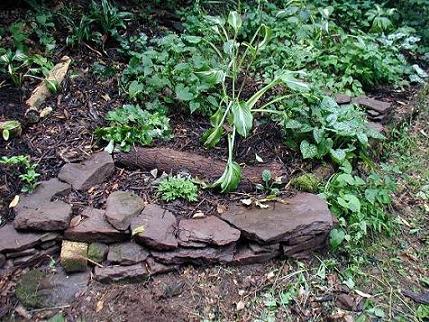
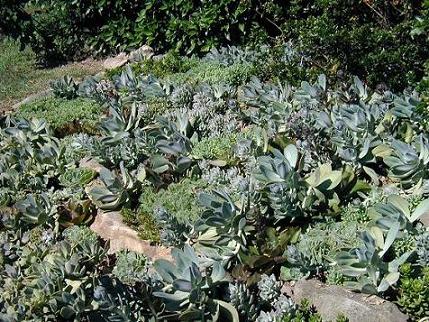
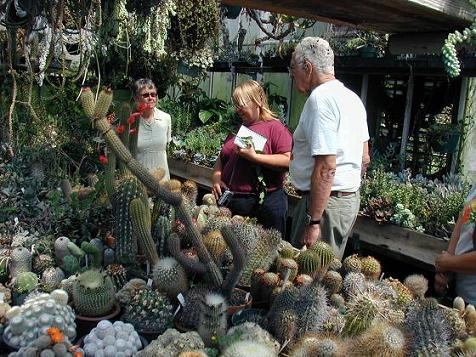
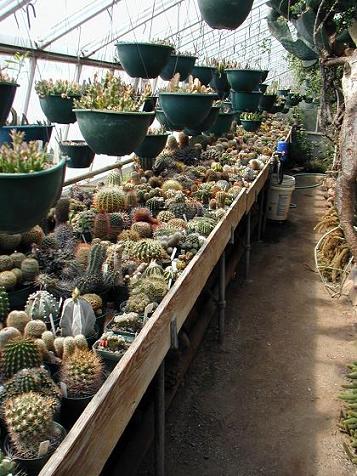
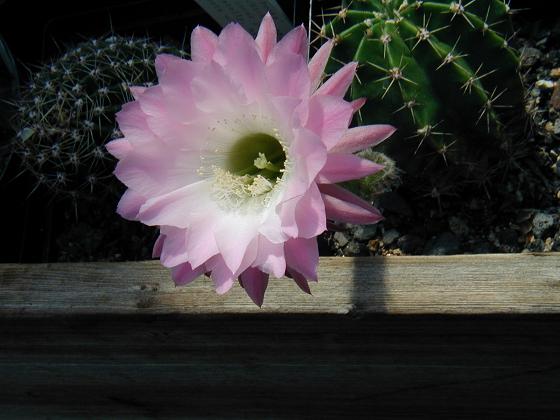
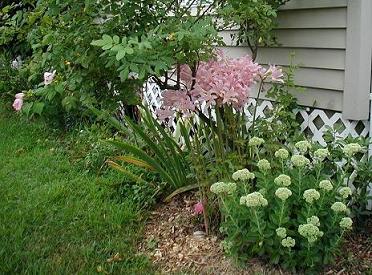
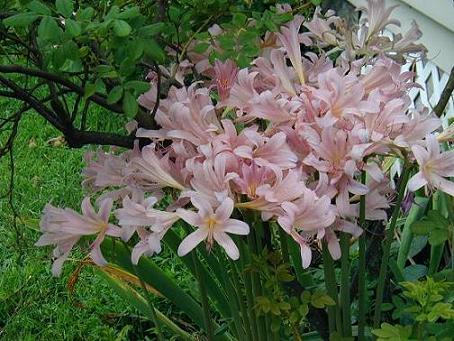

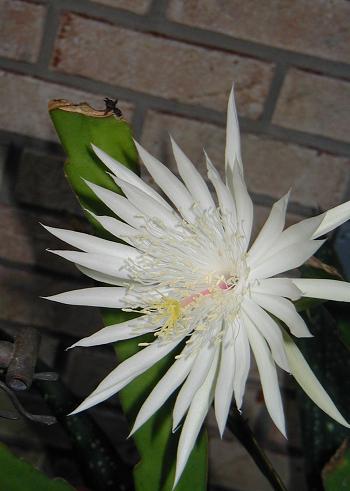
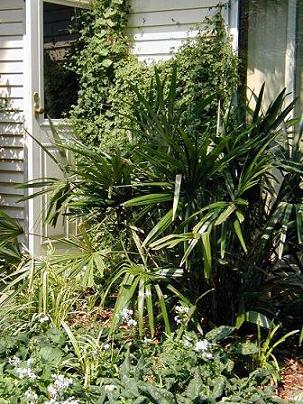
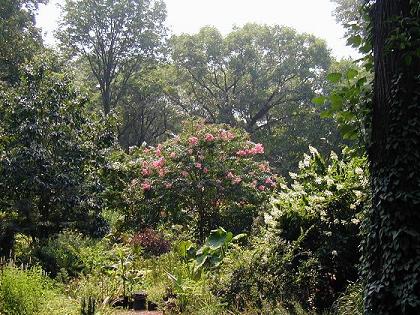

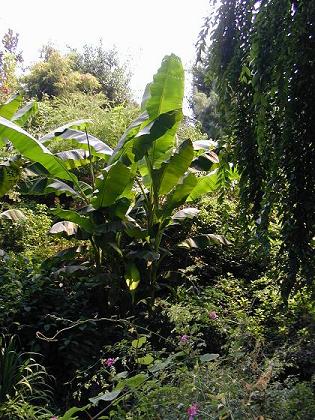
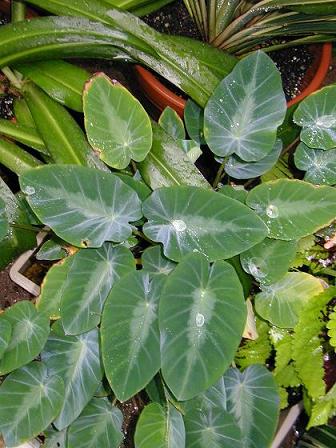
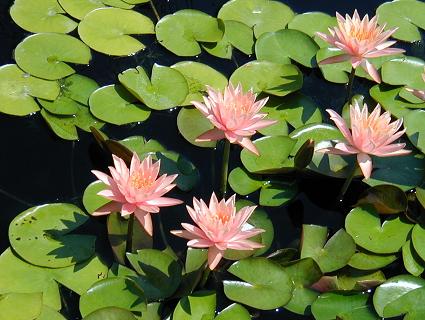
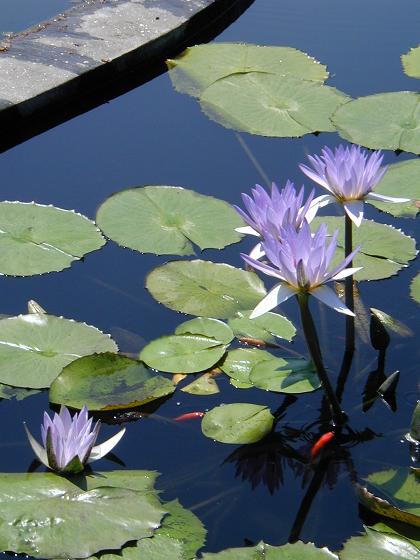
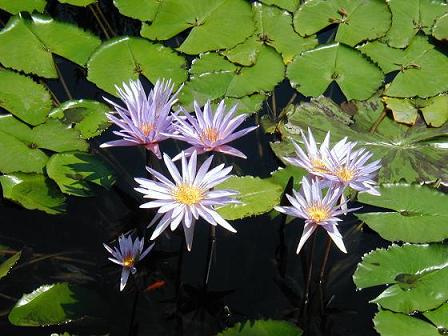
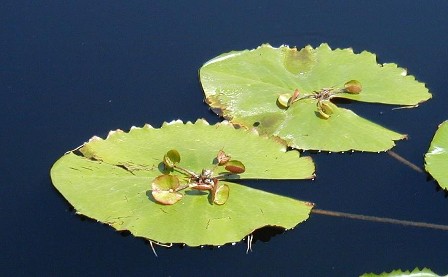
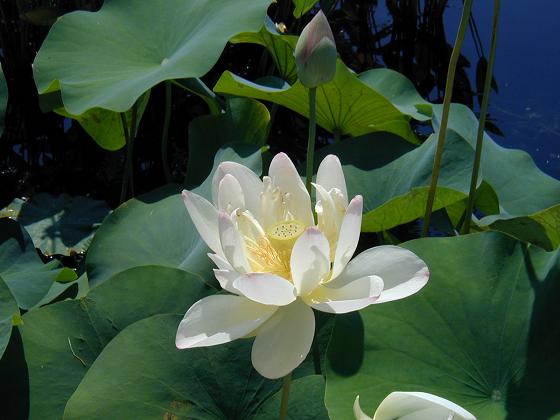

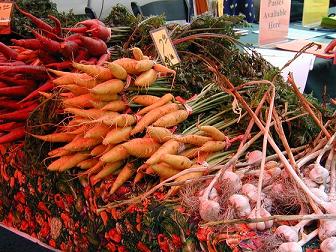
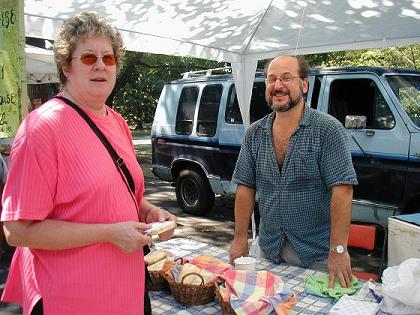
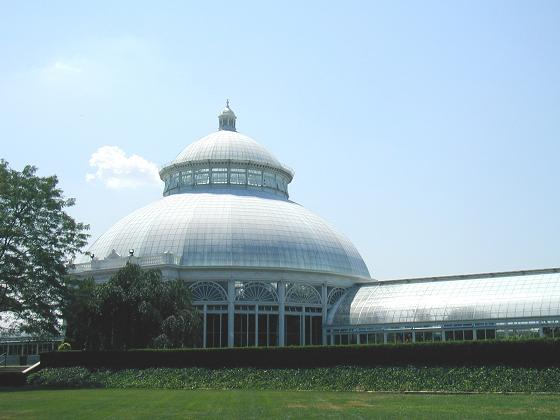
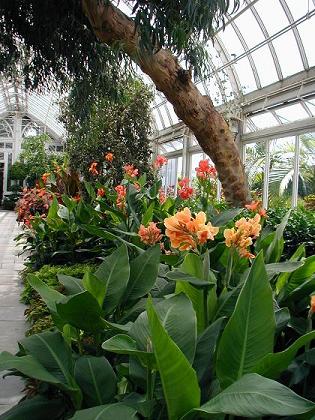
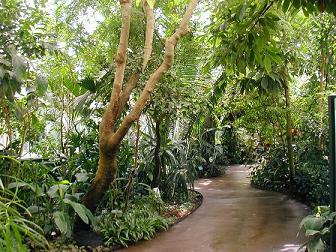
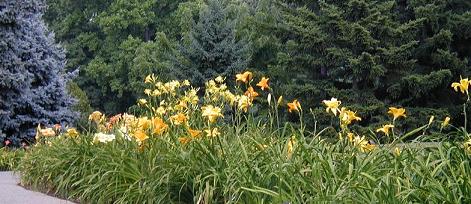
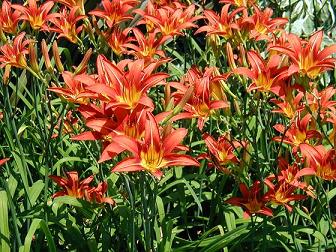
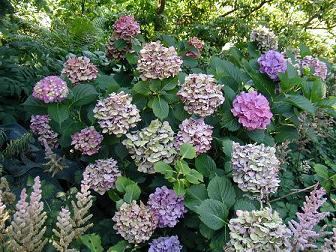
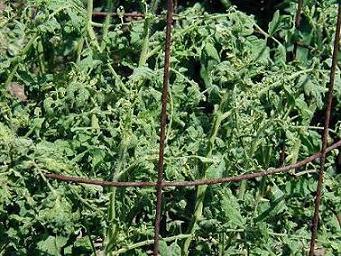
date
plant
1 August
Lilium lancifolium 'Flore Pleno'
date
plant